by Amanda Beth Peery
by Amanda Beth Peery
Stan Carey in Sentence First:
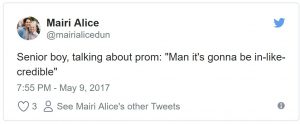 Like has undergone radical developments in modern English. It can function as a hedge (‘I’ll be there in like an hour’), a discourse particle (‘This like serves a pragmatic function’), and a sentence adverb (‘It’s common in Ireland, like’). These and other non-standard usages are frequently criticised, but they’re probably older than critics think.
Like has undergone radical developments in modern English. It can function as a hedge (‘I’ll be there in like an hour’), a discourse particle (‘This like serves a pragmatic function’), and a sentence adverb (‘It’s common in Ireland, like’). These and other non-standard usages are frequently criticised, but they’re probably older than critics think.
More recent is the so-called quotative like (‘I’m like, Whoa!’), also often disparaged. This became widely established impressively fast and is leading to some remarkable usages in younger generations: children saying things like ‘What’s Ernie like?’ to mean ‘What’s Ernie saying?’
So some uses of like are emerging right now, spreading through younger speech communities. In episode 278 of Australia’s Talk the Talk podcast, guest Alexandra D’Arcy – a linguistics professor who literally wrote the book on like – says that while she might say ‘at like the same time’, her son can say ‘at the like same time’, which is not in her grammar at all. It’s a subtle but striking difference.
It gets better. The latest novel use to which like is being put is as an infix. Infixes are a pretty small set in English, so a new one is a genuine surprise, linguistically. In some ways it is unlikeprecedented.
More here.
Jennifer Ouellette in Quanta:

Gerardo Ortiz remembers well the time in 2010 when he first heard his Indiana University colleague John Beggs talk about the hotly debated “critical brain” hypothesis, an attempt at a grand unified theory of how the brain works. Ortiz was intrigued by the notion that the brain might stay balanced at the “critical point” between two phases, like the freezing point where water turns into ice. A condensed matter physicist, Ortiz had studied critical phenomena in many different systems. He also had a brother with schizophrenia and a colleague who suffered from epilepsy, which gave him a personal interest in how the brain works, or doesn’t.
Ortiz promptly identified one of the knottier problems with the hypothesis: It’s very difficult to maintain a perfect tipping point in a messy biological system like the brain. The puzzle compelled him to join forces with Beggs to investigate further.
Ortiz’s criticism has beleaguered the theory ever since the late Danish physicist Per Bak proposed it in 1992. Bak suggested that the brain exhibits “self-organized criticality,” tuning to its critical point automatically. Its exquisitely ordered complexity and thinking ability arise spontaneously, he contended, from the disordered electrical activity of neurons.
More here.
Rory Smith at CNN:
 IQ scores have been steadily falling for the past few decades, and environmental factors are to blame, a new study says.
IQ scores have been steadily falling for the past few decades, and environmental factors are to blame, a new study says.
The research suggests that genes aren’t what’s driving the decline in IQ scores, according to the study, published Monday.
Norwegian researchers analyzed the IQ scores of Norwegian men born between 1962 and 1991 and found that scores increased by almost 3 percentage points each decade for those born between 1962 to 1975 — but then saw a steady decline among those born after 1975.
Similar studies in Denmark, Britain, France, the Netherlands, Finland and Estonia have demonstrated a similar downward trend in IQ scores, said Ole Rogeberg, a senior research fellow at the Ragnar Frisch Center for Economic Research in Norway and co-author of the new study.
More here.
David French in National Review:
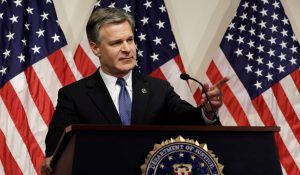 If you wade through the entire inspector general’s report, consider the content and tone of the FBI correspondence quoted within it, and ponder the timeline, you will finally get an answer to the key question I, and millions of Americans, have asked: If key members of the FBI were actually biased against Donald Trump, why did the FBI so dramatically damage Hillary Clinton’s campaign in the last days before the election? Why did it draft a letter to Congress announcing that it was reopening its email investigation a month after it found Anthony Weiner’s laptop, a letter that detonated like a bomb in the campaign and had a measurable effect on Hillary’s polling?
If you wade through the entire inspector general’s report, consider the content and tone of the FBI correspondence quoted within it, and ponder the timeline, you will finally get an answer to the key question I, and millions of Americans, have asked: If key members of the FBI were actually biased against Donald Trump, why did the FBI so dramatically damage Hillary Clinton’s campaign in the last days before the election? Why did it draft a letter to Congress announcing that it was reopening its email investigation a month after it found Anthony Weiner’s laptop, a letter that detonated like a bomb in the campaign and had a measurable effect on Hillary’s polling?
Now we know. The decisions leading up to that moment were influenced by a toxic stew of anti-Trump bias and institutional self-interest. The combination of those two factors sent an FBI torpedo straight at the SS Hillary, blasting another hole in a ship that was already taking on water.
The vast majority of the report simply reaffirms and amplifies previous reporting. It provides an interesting window into the shock and concern inside the FBI when Barack Obama appeared to prejudge the case and exonerate Hillary. It details how the FBI focused on Hillary’s alleged intent, even though one of the relevant statutes imposes criminal penalties for mere “gross negligence,” when it declined to recommend Espionage Act charges against her. And it provides a blow-by-blow account of James Comey’s defiant decision to depart from DOJ policy and practice and make an independent announcement of the FBI’s recommendation.
But then, when the story moves into the fall, things change. The report has new details and a new narrative that provide the last, strange twist on the strangest election cycle of my lifetime.
More here.
Kenan Malik in Pandaemonium:
 What do we mean by diversity? And why is it good – or not?
What do we mean by diversity? And why is it good – or not?
For all the myriad debates about diversity today, such questions are rarely addressed in any depth. The latest hoo-ha was generated by a Lionel Shriver column in the Spectator, which questioned publisher Penguin Random House’s pledge to make the company more diverse. ‘We want both our new hires and the authors we acquire to reflect UK society by 2025’, PRH announces on its website.
‘Drunk on virtue,’ Shriver wrote, ‘Penguin Random House no longer regards the company’s raison d’être as the acquisition and dissemination of good books.’ She went on: ‘Literary excellence will be secondary to ticking all those ethnicity, gender, disability, sexual preference and crap-education boxes.’ From now on, ‘a manuscript written by a gay transgender Caribbean who dropped out of school at seven and powers around town on a mobility scooter… will be published’ even if it is ‘incoherent, tedious, meandering’.
It was a bog-standard anti-diversity rant wrapped up in Shriveresque language, mixing valid criticisms with over-the-top assertions. The line about the ‘gay transgender Caribbean’ is a tired cliche, clearly satirical, but also clearly intended to provoke a response. And provoke it did.
More here.
Sarah Marshall in The New Republic:
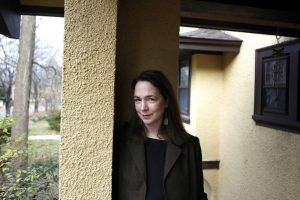 I first encountered Lorrie Moore when I read “How to Become a Writer,” a mesmerizingly bleak story from her 1985 debut collection, Self-Help, which I imagine to be so frequently anthologized because editors want something of hers and because the title is so appealing. Besides, it’s a promising one, suggesting a clear set of instructions. Like much of Self-Help, the story is voiced in second-person imperative, but it can only offer directions down a road to nowhere: “First,” its opening lines instruct, “try to be something, anything, else.”
I first encountered Lorrie Moore when I read “How to Become a Writer,” a mesmerizingly bleak story from her 1985 debut collection, Self-Help, which I imagine to be so frequently anthologized because editors want something of hers and because the title is so appealing. Besides, it’s a promising one, suggesting a clear set of instructions. Like much of Self-Help, the story is voiced in second-person imperative, but it can only offer directions down a road to nowhere: “First,” its opening lines instruct, “try to be something, anything, else.”
Did Lorrie Moore ever try to be anything else? Her collected nonfiction, in the newly-released See What Can Be Done, offers a few answers: some about Moore herself, and some about the intertwined joys and despairs of a writing life—and the futility, perhaps, of resisting one. As in her fiction—for which the vast majority of readers know her—Moore’s one-liners are tart, but never acid. “The clichés here,” she writes of James Cameron’s Titanic, “are sturdy to the point of eloquence.” Of George H.W. Bush in the 1992 election: “He was too proud to flirt.” She strikes the reader as someone who could silence a room with a few well-placed glances; the most withering thing she will say about the most ridiculous of passages is that it “gives one pause.” I was three-quarters of the way through this book before I realized—shocked, and then shocked at my shock—that it contains no hatchet jobs.
See What Can Be Done is mostly cultural criticism: a scabbard sheathing 34 years’ worth of American media, from Nora Ephron’s Heartburn to the 2016 election, but studded, here and there, with gem-dense personal essay. The most unsettling of all these is “One Hot Summer, or A Brief History of Time,” Moore’s essay on her own honeymoon, folded into a book that contains occasional tossed-over-the-shoulder references to male partners who alternately support and undermine women’s creative work. (Edna St. Vincent Millay, we learn, was married to “the stunning Eugen Boissevain,” who cooked her dinners and tried morphine to better understand his wife’s addiction and withdrawal.)
More here.
Saifedean Ammous in The Saif House:
 After the success of my predictions for the 2010 and 2014 World Cup, I have decided to not quit while I’m ahead, and put my neck and footballing knowledge on the line and hand everyone in the internet the chance to mock me relentlessly if I get things wrong. Please note I’ve been extremely busy with my book and have not had time to review this properly or edit it, so it might have mistakes, but you are not paying me for it so please don’t waste even more time complaining and arguing with me. We’re both better off spending that time watching the games!
After the success of my predictions for the 2010 and 2014 World Cup, I have decided to not quit while I’m ahead, and put my neck and footballing knowledge on the line and hand everyone in the internet the chance to mock me relentlessly if I get things wrong. Please note I’ve been extremely busy with my book and have not had time to review this properly or edit it, so it might have mistakes, but you are not paying me for it so please don’t waste even more time complaining and arguing with me. We’re both better off spending that time watching the games!
Egypt
Football is an industry built on delusion. I don’t mean to imply that is a bad thing. On the contrary, that is an essential part of the beauty of the game. Billions of boys all around the world, including your humble correspondent, grow up with the utterly delusional dream that one day they will lift the World Cup, leading a team of their countrymen against the best players of the world, fighting hard to get to the final, scoring the winning goal, and then lifting the trophy and spending the rest of their life basking in the glory and admiration of the entire planet.
More here.
From the MIT Technology Review:
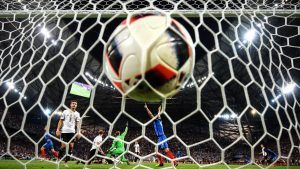 One way to gauge likely outcomes is to look at bookmakers’ odds. These companies use professional statisticians to analyze extensive databases of results in a way that quantifies the probability of different outcomes of any possible match. In this way, bookmakers can offer odds on all the games that will kick off in the next few weeks, as well as odds on potential winners.
One way to gauge likely outcomes is to look at bookmakers’ odds. These companies use professional statisticians to analyze extensive databases of results in a way that quantifies the probability of different outcomes of any possible match. In this way, bookmakers can offer odds on all the games that will kick off in the next few weeks, as well as odds on potential winners.
An even better estimate comes from combining the odds from lots of different bookmakers. This approach suggests Brazil is the clear favorite to win the 2018 World Cup, with a probability of 16.6 percent, followed by Germany (12.8 percent) and Spain (12.5 percent).
But in recent years, researchers have developed machine-learning techniques that have the potential to outperform conventional statistical approaches. What do these new techniques predict as the likely outcome of the 2018 World Cup?
More here.
Gavin Francis at The Guardian:
 Into the shifting sands of Oman he follows the stories of Wilfred Thesiger, Bertram Thomas and Harry St John Philby, mesmerised by a stillness in ceaseless motion: “The desert … leaves you dazed,” he writes, “and yet it quickly becomes apparent that, just as the desert is not silent, it is far from being still.” In Australia he visits the Maralinga nuclear test sites, superbly described as “a ruined place whose silence is less tranquillity’s than that of a battlefield where the killing has just ended”. The British director of nuclear testing, William Penney, saw in the undulating Australian desert “the appearance of English downland”. In Atkins’s imagination those outback dusts merge with the blood-red circles on cold war maps – the ones predicting the radii of nuclear devastation.
Into the shifting sands of Oman he follows the stories of Wilfred Thesiger, Bertram Thomas and Harry St John Philby, mesmerised by a stillness in ceaseless motion: “The desert … leaves you dazed,” he writes, “and yet it quickly becomes apparent that, just as the desert is not silent, it is far from being still.” In Australia he visits the Maralinga nuclear test sites, superbly described as “a ruined place whose silence is less tranquillity’s than that of a battlefield where the killing has just ended”. The British director of nuclear testing, William Penney, saw in the undulating Australian desert “the appearance of English downland”. In Atkins’s imagination those outback dusts merge with the blood-red circles on cold war maps – the ones predicting the radii of nuclear devastation.
The chapters vary in their focus: Atkins mocks those travel writers who believe themselves to be explorers, and shudders with post-colonial embarrassment at the deeds of Aurel Stein and Sven Hedin.
more here.
Gabrielle Carey at The Sydney Review of Books:
 ‘Is Finnegans Wake really important?’ my student asked me a few years ago. He was from India, sent to Australia for his education at great expense by his parents. I felt sorry for him so I had invented some cash-in-hand filing work, much of which involved compiling notes, essays, articles, emails and letters in relation to Finnegans Wake. Now he was daring to ask whether the book I’d spent much of my adult life devoted to was really of any importance.
‘Is Finnegans Wake really important?’ my student asked me a few years ago. He was from India, sent to Australia for his education at great expense by his parents. I felt sorry for him so I had invented some cash-in-hand filing work, much of which involved compiling notes, essays, articles, emails and letters in relation to Finnegans Wake. Now he was daring to ask whether the book I’d spent much of my adult life devoted to was really of any importance.
‘Yes!’ I snapped back immediately, appalled that he dared to doubt my enterprise. But then I realised I couldn’t really explain why. And perhaps that’s where my doubts began. More than doubts. Like so many before me, I have come to realise that there is a reason why Joyce’s nickname is Mr Difficulty.
more here.
Chad Post at The Quarterly Conversation:
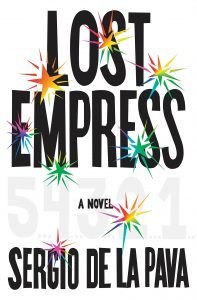 One of the most ambitious, audacious books of recent memory, Lost Empress by Sergio de la Pava brings together a smorgasbord of plot lines and scenes ranging from the serious to the comic, including: a clash between the NFL and the Indoor Football League, the history of Joni Mitchell’s career, the heist of a lost Dalí, a court case involving a high-profile murder and an incredibly intelligent inmate, the Mandela Effect, the life of a 911 operator, the origins of a brain tumor, quantum mechanics and the mind-body divide as it relates to time and consciousness, an accidental impaling and the said consequences of such as relates to the nature of getting revenge, multiple love stories that go unfulfilled, and a fight between a pig mascot and a crab one.
One of the most ambitious, audacious books of recent memory, Lost Empress by Sergio de la Pava brings together a smorgasbord of plot lines and scenes ranging from the serious to the comic, including: a clash between the NFL and the Indoor Football League, the history of Joni Mitchell’s career, the heist of a lost Dalí, a court case involving a high-profile murder and an incredibly intelligent inmate, the Mandela Effect, the life of a 911 operator, the origins of a brain tumor, quantum mechanics and the mind-body divide as it relates to time and consciousness, an accidental impaling and the said consequences of such as relates to the nature of getting revenge, multiple love stories that go unfulfilled, and a fight between a pig mascot and a crab one.
Unsurprisingly, this book is over 600 pages long, which, at a time in which the books garnering the most praise tend to be short, dark, and scary, feels almost like an aesthetic zag where everyone else is zigging. This is also more or less the same way that you could characterize de la Pava’s entire literary career.
more here.
Siddhartha Mukherjee in The New York Times:
 On my way to a meeting on cancer and personalized medicine a few weeks ago, I found myself thinking, improbably, of the Saul Steinberg New Yorker cover illustration “View From Ninth Avenue.” Steinberg’s drawing (yes, you’ve seen it — in undergraduate dorm rooms, in subway ads) depicts a mental map of the world viewed through the eyes of a typical New Yorker. We’re somewhere on Ninth Avenue, looking out toward the water. Tenth Avenue looms large, thrumming with pedestrians and traffic. The Hudson is a band of gray-blue. But the rest of the world is gone — irrelevant, inconsequential, specks of sesame falling off a bagel. Kansas City, Chicago, Las Vegas and Los Angeles are blips on the horizon. There’s a strip of water denoting the Pacific Ocean, and faraway blobs of rising land: Japan, China, Russia. The whole thing is a wry joke on self-obsession and navel gazing: A New Yorker’s world begins and ends in New York.
On my way to a meeting on cancer and personalized medicine a few weeks ago, I found myself thinking, improbably, of the Saul Steinberg New Yorker cover illustration “View From Ninth Avenue.” Steinberg’s drawing (yes, you’ve seen it — in undergraduate dorm rooms, in subway ads) depicts a mental map of the world viewed through the eyes of a typical New Yorker. We’re somewhere on Ninth Avenue, looking out toward the water. Tenth Avenue looms large, thrumming with pedestrians and traffic. The Hudson is a band of gray-blue. But the rest of the world is gone — irrelevant, inconsequential, specks of sesame falling off a bagel. Kansas City, Chicago, Las Vegas and Los Angeles are blips on the horizon. There’s a strip of water denoting the Pacific Ocean, and faraway blobs of rising land: Japan, China, Russia. The whole thing is a wry joke on self-obsession and navel gazing: A New Yorker’s world begins and ends in New York.
In the mid-2000s, it felt to me, at times, as if cancer medicine were viewing the world from its own Ninth Avenue. Our collective vision was dominated by genomics — by the newfound capacity to sequence the genomes of cells (a “genome” refers to the complete set of genetic material present in an organism or a cell). Cancer, of course, is typically a disease caused by mutant genes that drive abnormal cellular growth (other features of cellular physiology, like the cell’s metabolism and survival, are also affected). By identifying the mutant genes in cancer cells, the logic ran, we would devise new ways of killing the cells. And because the exact set of mutations was unique to an individual patient — one woman’s breast cancer might have mutations in 12 genes, while another breast cancer might have mutations in a different set of 16 — we would “personalize” cancer medicine to that patient, thereby vastly increasing the effectiveness of therapy.
This kind of thinking had an exhilarating track record. In the 2000s, a medicine called Herceptin was shown to be effective for women with breast cancer, but only if the cancer cells carried a genetic aberration in a gene called HER-2. Another drug, Gleevec, worked only if the tumor cells had a mutant gene called BCR-ABL, or a mutation in a gene called c-kit. In many of our genome-obsessed minds, the problem of cancer had become reduced to a rather simple, scalable algorithm: find the mutations in a patient, and match those mutations with a medicine. All the other variables — the cellular environment within which the cancer cell was inescapably lodged, the metabolic and hormonal milieu that surrounded the cancer or, for that matter, the human body that was wrapped around it — might as well have been irrelevant blobs receding in the distance: Japan, China, Russia.
Christine Smallwood in Bookforum:
 By the time Couples came out, John Updike had already published four novels, three story collections, two poetry collections, and a volume of assorted prose. He had been called, by the New York Times Book Review, “the most significant young novelist in America,” and had been sent by the State Department on a tour of the Communist bloc. And yet there was a growing sense that he had not made a major statement on the issues of the day. He could describe a barn well enough, but to what end? The man whose name will be forever asterisked with the insult David Foster Wallace made famous—“just a penis with a thesaurus”—was thought to be clever but a little small, too decorative, and overly fond of childhood reminiscence. Norman Podhoretz complained that Updike “has very little to say.” John Aldridge put him in “the second or just possibly the third rank of serious American novelists.” Elizabeth Hardwick admired Rabbit, Run, but thought there was “something insignificant, or understated, or too dimly felt in the heart of Rabbit himself.” As for his sexual frankness, Updike, like his contemporaries, had “not decided or discovered in what way this frankness will change the work itself. It cannot be merely interlarded like suet in the roast.”
By the time Couples came out, John Updike had already published four novels, three story collections, two poetry collections, and a volume of assorted prose. He had been called, by the New York Times Book Review, “the most significant young novelist in America,” and had been sent by the State Department on a tour of the Communist bloc. And yet there was a growing sense that he had not made a major statement on the issues of the day. He could describe a barn well enough, but to what end? The man whose name will be forever asterisked with the insult David Foster Wallace made famous—“just a penis with a thesaurus”—was thought to be clever but a little small, too decorative, and overly fond of childhood reminiscence. Norman Podhoretz complained that Updike “has very little to say.” John Aldridge put him in “the second or just possibly the third rank of serious American novelists.” Elizabeth Hardwick admired Rabbit, Run, but thought there was “something insignificant, or understated, or too dimly felt in the heart of Rabbit himself.” As for his sexual frankness, Updike, like his contemporaries, had “not decided or discovered in what way this frankness will change the work itself. It cannot be merely interlarded like suet in the roast.”
With Couples, Updike served up a whole plate of suet. (Do you understand the genius of Hardwick’s metaphor? Suet is the hard white fat on the loins of beef or mutton.) He worked out the plot in church, jotting down notes on the weekly program—maybe that’s why the book has the air of being so scandalized by itself.
More here.